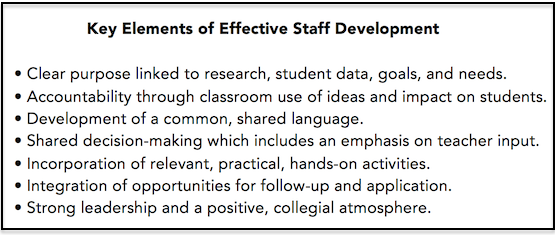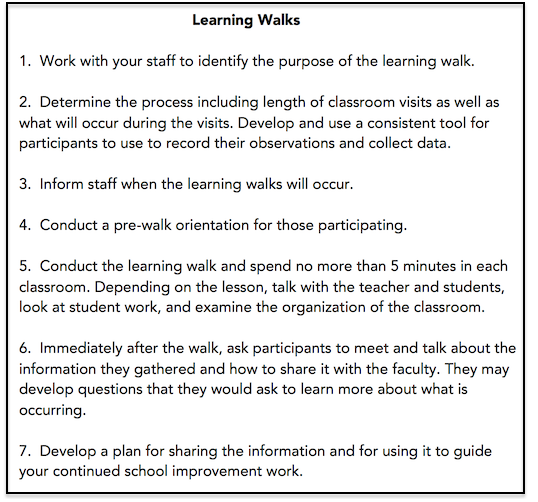3 Ways to Encourage Shared Teacher Learning
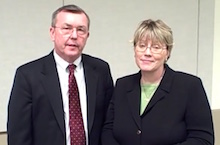 By Barbara Blackburn and Ron Williamson
By Barbara Blackburn and Ron Williamson
For Barbara’s dissertation, we studied schools that had won a national award for their staff development. From that, we deduced that there are seven key elements of effective professional learning.
We’ve found that, although teacher leadership is a critical aspect of any initiative, change typically begins with and is supported by strong administrative leadership.
This does not demean the role of teachers; it simply acknowledges that a strong administrator who provides leadership, autonomy, and support, can drive positive change – in part by creating the necessary environment for effective PD practices.
The other four themes – teachers’ advanced knowledge and training, teachers’ willingness and readiness to embrace change, collaboration, teachers’ beliefs and strategies for differentiating curriculum – are influenced by ongoing professional development activities. Much of this can occur through Professional Learning Communities (PLCs). Let’s look at three job-embedded professional activities that can be used with your PLCs.
1. Learning Walks
Learning walks are a form of instructional walkthrough, but they are typically organized and led by teachers. Learning walks are not evaluative. They are not designed to provide individual feedback to the observed teachers, but instead aimed at helping participants learn about instruction and identify areas of strength as well as need. Learning walks provide a “snapshot” of the instructional program at your school. Since participants are in classrooms for only a short time, they should not draw conclusions about individual teachers or classes.
One school in Los Angeles held learning walks each month. Groups of teachers conducted the walks looking for evidence of the use of research-based instructional practices described in Classroom Instruction that Works: Research-Based Strategies for Increasing Student Achievement (Marzano, Pickering & Pollock, 2001). Another school developed a rubric based on Barbara’s four-part definition of rigor (Rigor is Not a Four-Letter Word, 2008) and used it to guide their learning walks.
2. Developing Consistent Expectations
One activity that is particularly beneficial when used in a PLC is for teachers to work together to develop consistent expectations, perhaps for increasing rigor in the classroom. For example, teachers bring examples of tasks, assignments, and projects that require students to demonstrate understanding to the PLC and assess them to determine the level of rigor based on Webb’s Depth of Knowledge levels. Below, you will see a partial set of guiding questions teachers can use to collaboratively assess tasks, projects, and assignments.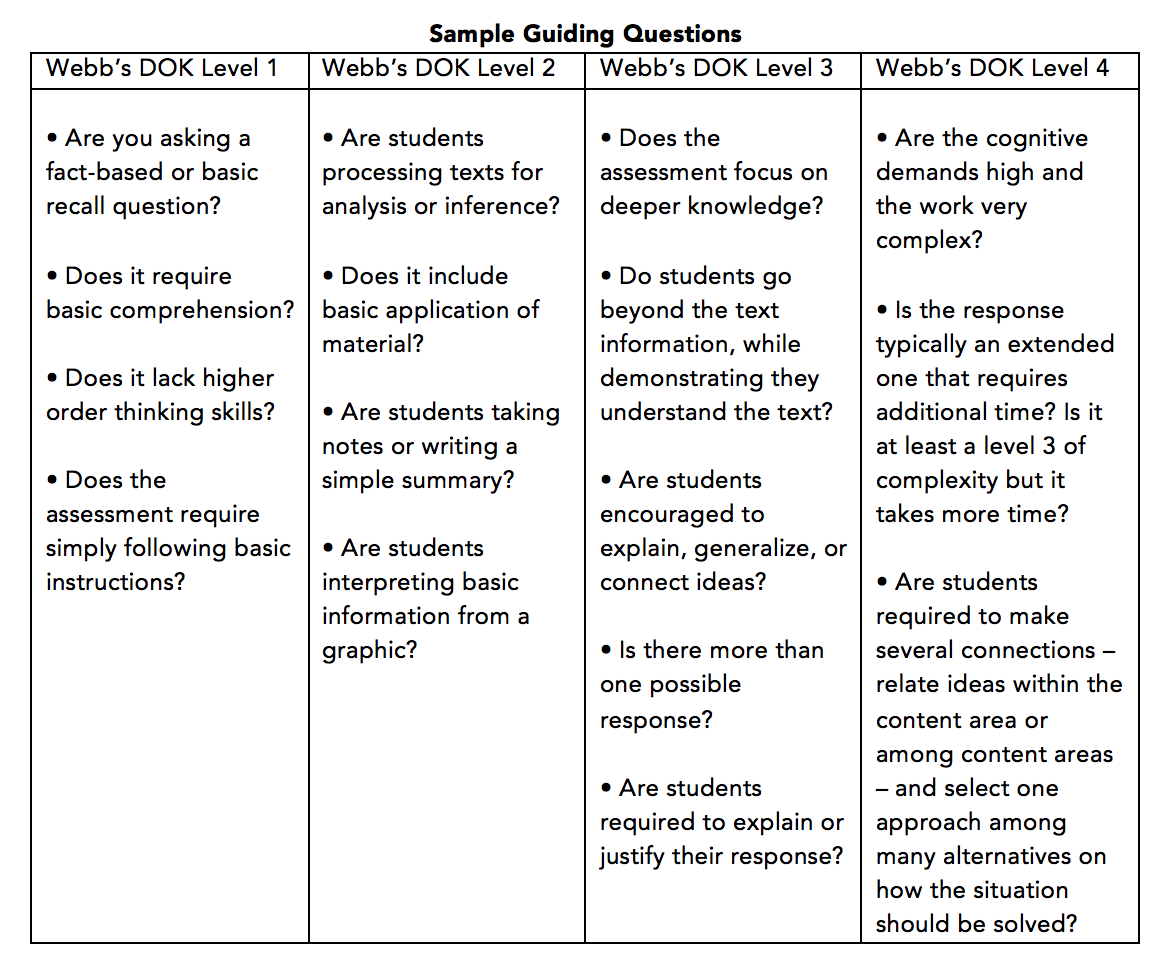
3. Lesson Studies
Lesson studies emphasize working in small groups to plan, teach, observe, and critique a lesson. It’s an excellent reflection of the principles of professional learning communities, as the goal is to systematically examine your teaching in order to become more effective.
In a lesson study, teachers work together to develop or adapt an existing lesson into a detailed rigorous differentiated teaching plan. One member of the group teaches the lesson to his or her students, while other members of the group observe. Next, the group discusses their observations about the lesson and the student learning going on.
Teachers revise the lesson based on their observations, then a second group member teaches the lesson with other members once again observing. Then the group meets to discuss the revised lesson. Finally, teachers talk about what the study lesson taught them and how they can apply the learning in their own classroom.
A Final Note
Effective professional development can be facilitated through Professional Learning Communities. Strategies such as learning walks, looking at tasks and assessments, and conducting learning studies can help you and your teachers improve instruction.
________________________
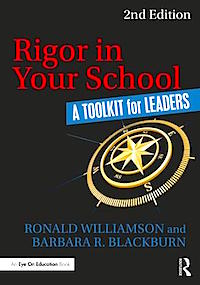
Barbara Blackburn was recently named one of the Top 30 Global Gurus in Education. She is a best-selling author of 16 books including Rigor in Your School: A Toolkit for Leaders, 2nd Edition written with Ron Williamson. A nationally recognized expert in the areas of rigor and motivation, she collaborates with schools and districts for professional development. Barbara can be reached through her website or her blog. Follow her on Twitter @BarbBlackburn.

